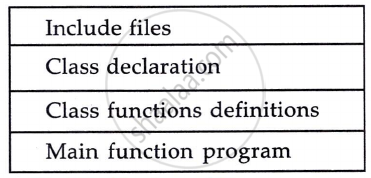Topics
Operating System
- Introduction to Operating System (OS)
- Idea of an Operating System
- Windows NT
- LINUX
- File Systems and Its types
- File Operations
- Access Methods and its types
- Allocation Methods
- Concepts Related to Process Management
- Concepts related to memory management
- Basics of Graphical User Interface (GUI)
- Access and Security Aspects of O.S.
Data Structures
C++ Programming
- Introduction to C++ Programming
- Idea Behind Object-Orientated Programming
- Object-orientated programming approach
- Object-Oriented Terms and Concepts
- Classes and Objects
- Constructors and Destructors
- Functions in C + +
- Arrays in C++
- Pointers in C++
- References in C++
- Strings in C++
- Inheritance
- Virtual functions and polymorphism
- Friends in C++
- Operator overloading and type conversions
- Files and Stream
HyperTex Markup Language (HTML)
- Introduction to Programming approach
- Tokens in C++
- Data Types
- Varaibles in C++
- Operators in C++
- Structure of C + + program
- Control structures in C++
Revision of Class XI Syllabus
Constants
There are two ways of creating constants in C++.
- Using the qualifier const.
- Defining a set of integer constants using enum. (Ex. enum {x = 100, y = 50, z = 200}. )
A value declared as const cannot be modified by a program.
Declaration of Variables
In C++, all the variables must be declared before they are used in executable statements. They can be declared anywhere in the programme but before using them.
Dynamic Initialization of Variables:
C ++ permits initialization of the variables at runtime. This is called as dynamic initialization. For example:
float area= 3.14 *rad*rad;
float avg = sum/i;
Observe that declaration and initialization of variable can be done simultaneously at a place where the variable is used for the first time.
Reference Variable
A reference variable provides an alternative name (alias) for a previously defined variable. A reference variable is created as follows.
data - type & reference - name = variable – name
Operators in C++
- << insertion operator: << is insertion or put to operator. It inserts (or sends) the contents of the variable on its right to the object on its left.
- >> Extraction operator: The operator>> is extraction operator or get from operator. It extracts (or takes) the value from the keyboard and assigns it to the variable on its right.
- Scope Resolution operator: A C + + program may contain a block within a block. Declaration of variable in an inner block hides a declaration of same variable in an outer block. Therefore, each declaration will cause reference to a different data object. Scope resolution operator can be used to uncover a hidden variable. It has the form:
variable - name.
This operator allows access to a global version of variable.
Memory management operators
C++ defines two unary operators new and delete, to perform task of allocating memory dynamically at run time and freeing memory. The new operator can be used to create objects of any type. It has the form:
pointer - variable = new data type;
Manipulators
Manipulators are operators that are used to format the data display. The most used manipulators are endl and setw.
The endl operator is like '\ n'. It causes a line feed to be inserted.
The manipulator setw specifies fieldwidth.
Structure of C + + program
Typically, a C ++program contains four sections.

